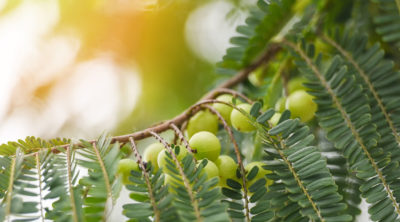Essential Facts about Zedoary Rhizome
Names
- Botanical: Curcuma longa
- Sanskrit: Shati, kachur
- Hindi: Karchur
- English: White turmeric
- Other: Amb halad, Zedoary (which comes from Arabic and Farsi; in those languages, it is called jadwaar or zedwar)
Energetics
- Rasa (taste): Pungent, bitter
- Guna (qualities): Light, dry
- Virya (action): Warming
- Vipaka (post-digestive effects): Pungent
- Dosha (constitution): Balances all three doshas: vata, kapha and pitta
Habitat
Zedoary is obtained is native to India, Pakistan and Indonesia but can now be found in many places.
Plant Description
White turmeric or zedoary rhizome is a perrenial plant with long leaves and yellow flowers. The inside of the rhizomes are pale yellow.
Parts Used
The roots or rhizomes.
Nutrients
Rhizome contains curcumol, zederone, zedoarone, fyranodiene, cumolone, pyrocurzerenone, procurcumenol, curcumenone, curcumanolide A and curcumanolide B, curcumenol, guaiane zedoarondiol.
Medicinal Uses of Zedoary Rhizome
Zedoary rhizome is an ingredient commonly found in Ayurvedic remedies. By keeping the dosha energies in balance, it can treat and guard against a wide range of health conditions.
Addressing Respiratory Issues
White turmeric helps to manage an excess of Kapha dosha. When Kapha dosha energy is excessively high in a person, they may experience a buildup of mucus. White turmeric balances the energies, guarding against the respiratory problems associated with too much Kapha.
Reducing Pain
You already know that white turmeric has natural anti-inflammatory effects. This can result in pain relief when applied to a wound in the form of a paste.
Improving Digestion
Balancing out the Kapha dosha energies also helps relieve digestion problems. These may include indigestion, poor appetite, flatulence, and more.
Detoxification
Like many Ayurvedic remedies, those featuring white turmeric help to remove toxins by balancing both Kapha and Vata dosha energies. Because people are exposed to toxins on a regular basis, this is a very good reason to make use of this powerful ingredient. Additionally, its detoxifying properties help to remove impurities from the blood and improve overall liver function.
Preventing Cancer
Research indicates white turmeric may help to guard against the development of certain cancers, and can even fight cancer cells. That makes it a useful supplement to treatment.
These are just a few reasons why white turmeric has long played a role in Ayurveda and has been included in many ancient rasaynas and remedies, like Chyawanprash.
Usage and Dosage of Zedoary Rhizome
The way in which it may be used depends on its purpose. For instance, many have found that white turmeric can be an effective means of reducing inflammation resulting from injuries and wounds. When used in this capacity, it’s formed into a paste, which can be directly applied to the affected area. It may also be applied as an essential oil.
Other uses may involve consuming white turmeric as a juice. It can also be made into a powder, which may be added to beverages and consumed directly. This is ideal if you’re using it for internal purposes, such as improving digestion or purifying the blood.
Consult with an Ayurveda expert to learn more about how to take this herbal supplement. They’ll help you better understand its role in Ayurveda, and what you can do to enjoy its full effects.
Reviewed by Dr. Jayant Lokhande, MD (Botanical Drugs), MBA (Biotechnology)



